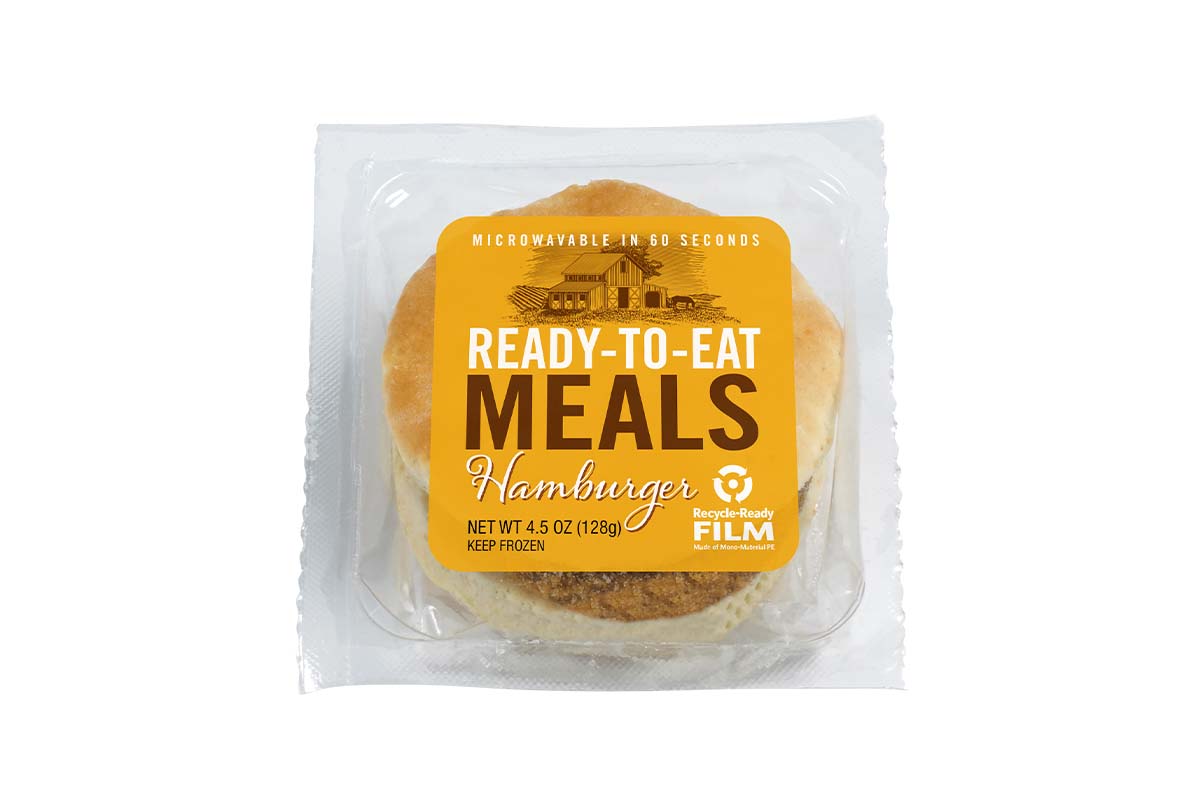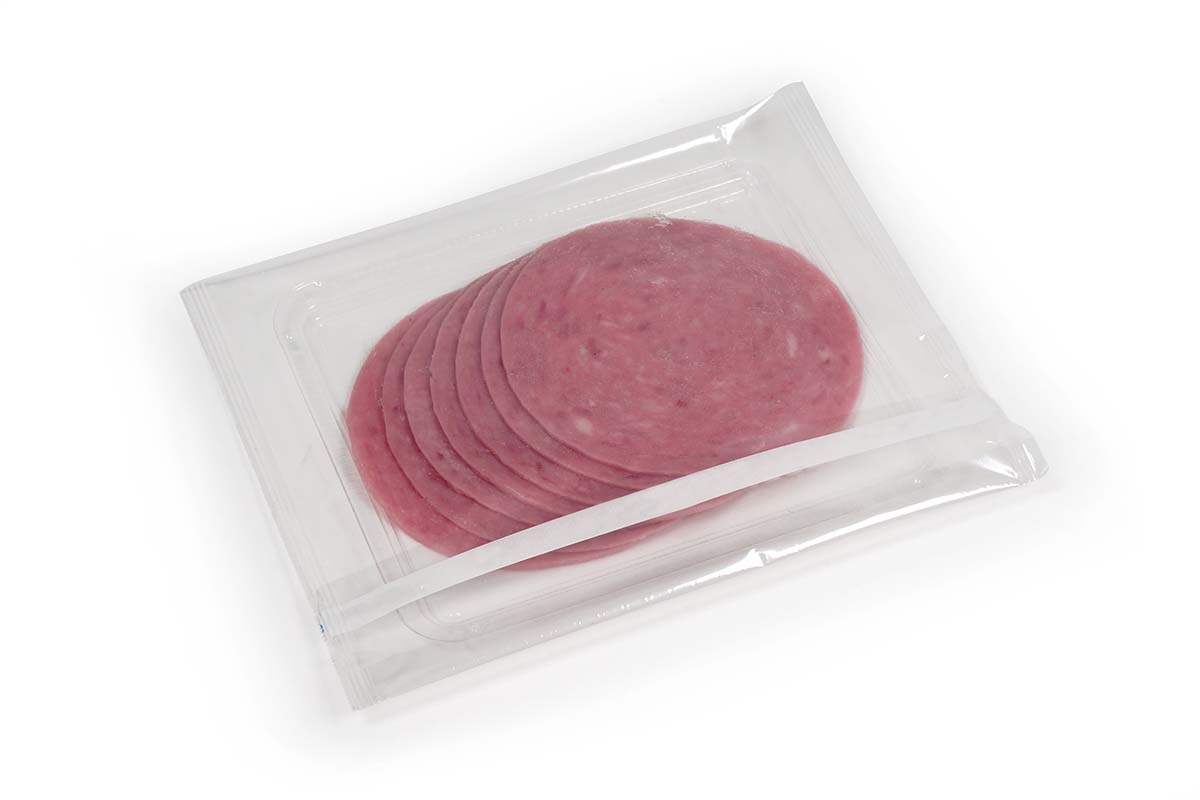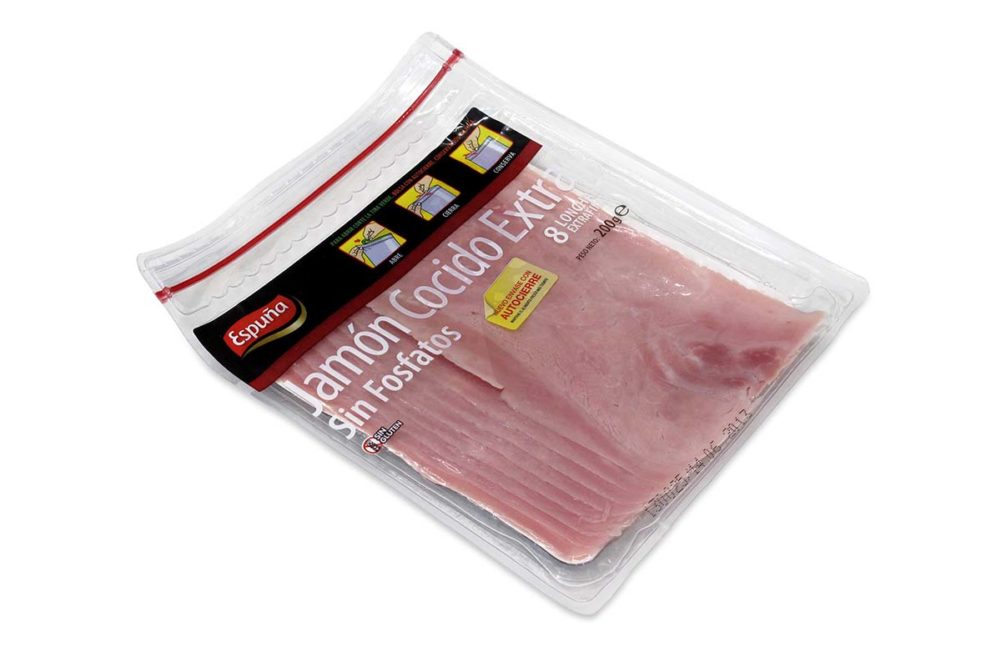Packaging in the crowded deli retail environment demands an exclusive and premium appearance to attract consumers while also focusing on freshness of the product.
Following a trend that started during the pandemic, many supermarket delis are focusing on meat products that offer convenience while keeping products fresh longer, which is largely a function of their packaging solutions.
“Innovative and unique look and feel from print technologies continues to evolve and innovate into new and trending technologies,” said Melanie Bandari, senior marketing manager for meat, poultry and seafood at Amcor Flexibles North America, Oshkosh, Wis. “New entrants in the deli meat space focus on smaller, more premium brands versus large, mass-produced brands.”
Ryan Spencer, product market manager for chambers, portioning and slicing at Multivac Inc., Kansas City, Mo., has noticed more demand for grab-and-go packaging that is designed to look like it was cut and packaged at the in-store deli counter.
“The footprint of the in-store deli in many grocery stores is either shrinking or disappearing entirely, as offerings such as prepared meals, in-store restaurants, sushi bars and the like are becoming more prevalent,” he said. “Grab-and-go packaging allows retailers to provide sliced meats and cheeses in a familiar-looking package that customers are seeking, without requiring a fully staffed deli section.”
Multivac offers many solutions in this area, starting with slicing and running all the way to palletizing.
“When it comes to package design, we have the experience to provide best practices and ideas, or we can take concepts from the customer and recommend the best way to achieve it,” Spencer said.
Furthermore, grab-and-go pre-packaged deli meat packaging is a growing segment for enhanced retailer convenience with the added benefit of a product delivered safely direct from the manufacturer.
“Our pre-packaged grab-and-go deli line offers a freshly sliced deli packaging’s look and feel, but the retailer doesn’t incur the labor costs of packing it on premises,” Bandari said. “The products are packaged on TFFS as well as new HFFS flow wrap lines.”
For 40 years, Kansas City, Mo.-based Weber has been a global leader in industrial high-speed slicing systems. Five years ago, Weber acquired a thermoform packaging company, and got into the packaging game.
“There’s a ton of innovation that we’ve rolled out where we feel we are pushing the industry forward in how these solutions are put together holistically,” said Zach Bearson, director of new business development for Weber. “Instead of 6-7 machines on a line that work together in a simple way, we’re thinking of these lines as one solution that works within itself, communicating within machines.”
For instance, customers utilize Weber’s solutions from hygienic product preparation to weight-accurate slicing and automated insertion, to the desired presentation in the packaging, whether they want trays or tubular bags.
“We can integrate tray sealers or flow packers into the Weber line as alternative packaging machines to the thermoformer and take care of seamless integration without interfaces for a smooth production process,” Bearson said.
Carlo Bergonzi, product manager for Tray Seal at Harpak-ULMA Packaging, noted in terms of pre-made containers, there’s been an increased need for reclosability, whether it’s peel/reseal or rigid lid.
“Easy open and re-close is key so you can use a portion of the product, and open and close as much as a dozen times,” he said. “Grab-and-go is big right now, so anything that offers convenient packaging is in vogue.”
Dave Favret, product manager for Thermoforming at Harpak-ULMA Packaging, added that suppliers are slicing and delivering grab-and-go packages that are being handled at a facility outside of the grocery store, though it looks like it is done on site.
“The perception of freshness is important,” he said. “But there’s a number of different things that are on the mind of consumers, such as packaging formats that use less plastic, are easier to manufacture and are more sustainable.”
 Grab-and-go pre-packaged items are a growing segment offering convenience and food safety. (Source: Amcor)
Grab-and-go pre-packaged items are a growing segment offering convenience and food safety. (Source: Amcor)
Environmentally sound
Sustainability continues to be important and top of mind for environmentally conscious consumers and resealability is a very important function of deli packaging today.
“The focus on sustainability continues to grow and mature,” Spencer said. “Customers are not only more concerned with the product inside the package, but with the package itself as well. What materials is it made of? Is it recyclable? If not, has the packaging been reduced to limit the impact on the environment? These are not theoretical questions anymore. Consumers are making buying decisions based on the answers to these questions.”
A good example from Multivac is the spray interleaving system on its slicer. Instead of using paper or plastic sheets between pieces of sliced meats and cheeses to allow for proper slice release, its spray system applies a small amount of oil that is allergen-free, tasteless and does not produce any additional waste.
Bergonzi has recently seen more interest in sustainability with molded fiber trays with a pouch inside and a rigid lid, or a PED tray with reseal — something that’s reducing plastic as much as possible, but also re-closeable.
“They are trying to use as much sustainable material as they can — with some deli products even packaged with a paper-feel material,” he said. “That has an appeal to many.”
Amcor’s SmartTack EZ Peel Reseal and SmartTack Die Cut Resealable Label lines are popular as they allow customers the convenience of resealable packaging while maintaining the freshness consumers expect in a deli meat package. These resealable options also offer substantial tamper evidence for added consumer safety.
“Our Catalyst program helps our customers solve market and sustainability needs through packaging innovation,” Bandari said. “Through smart insight, imagination and innovation, we collaborate to spark meaningful ideas, accelerate growth and move brands forward. Amcor’s ASSET is a third-party certified tool for performing new package sustainability metrics and can support customers’ on-pack messaging.”
 The food packaging industry has seen growing demand for pre-made containers that open and close with ease. (Source: Harpak-ULMA Packaging)
The food packaging industry has seen growing demand for pre-made containers that open and close with ease. (Source: Harpak-ULMA Packaging)
On the rise
One area poised for significant growth is paper-based solutions as they offer consumers a positive end of life story with existing curbside recycle streams.
With this in mind, Amcor is bringing multiple high barrier paper-based formats to market, including Amcor Packpyrus, a new line of thermoformable paper in combination with high oxygen barrier materials for extended shelf life and a significant reduction in fossil derived materials.
“The product is widely sold in Europe today for deli meats and is expanding into the Americas,” Bandari said. “The structure is 85% paper with a barrier layer to ensure product freshness and maintain shelf life. Its lightweight footprint offers space reduction with upscale merchandising for shallow draw applications like shingled deli meats.”
The labor market was a catalyst for many companies automating and reducing the lines on the floor, and Weber is coming up with solutions so customers can repurpose labor and be more efficient through its packaging solutions.
“From a manufacturing perspective, we take a different approach,” said Mike King, technical solutions manager of packaging for Weber. “We own our own vision company, so all the components on the line are engineered and programmed by Weber in-house, which is a completely different philosophy than what else is going on out there.”
Looks matter
Packaging in the cluttered retail environment requires an exclusive look and premium appearance to stand out on the shelf and to attract consumers.
For instance, Amcor’s Amplify finishing technologies create a “stop the cart” experience with a portfolio of sensory solutions designed to create engagement opportunities, according to Bandari.
“Amcor has invested in another Amplify production asset in order to meet the high demand for shelf differentiated print technologies,” she said. “This asset came on-line in 2022 and was built for handling shorter runs with added flexibility. We are now equipped to handle demanding flexo and roto designs covering short to long run production needs with redundant manufacturing operations.”



